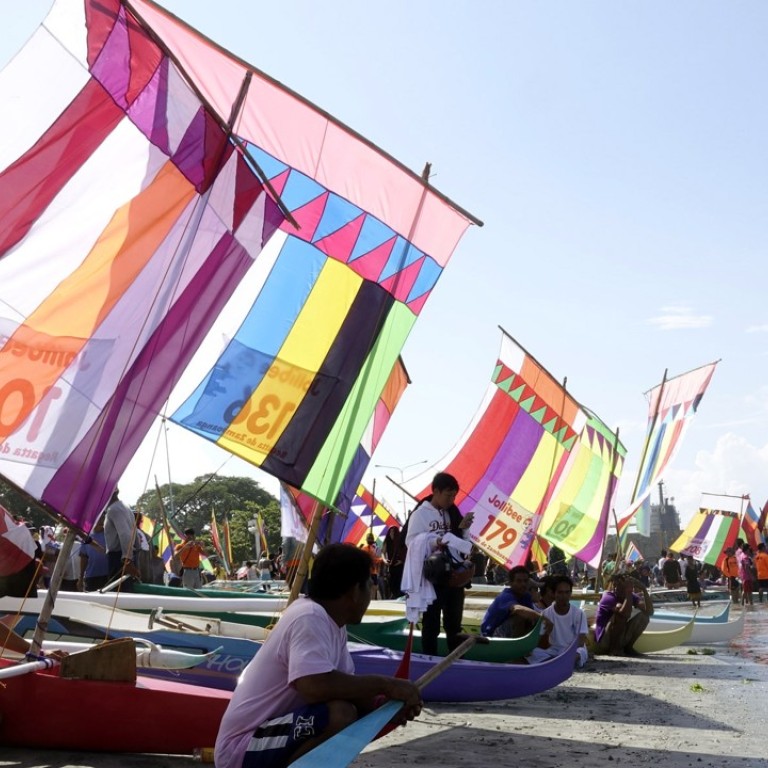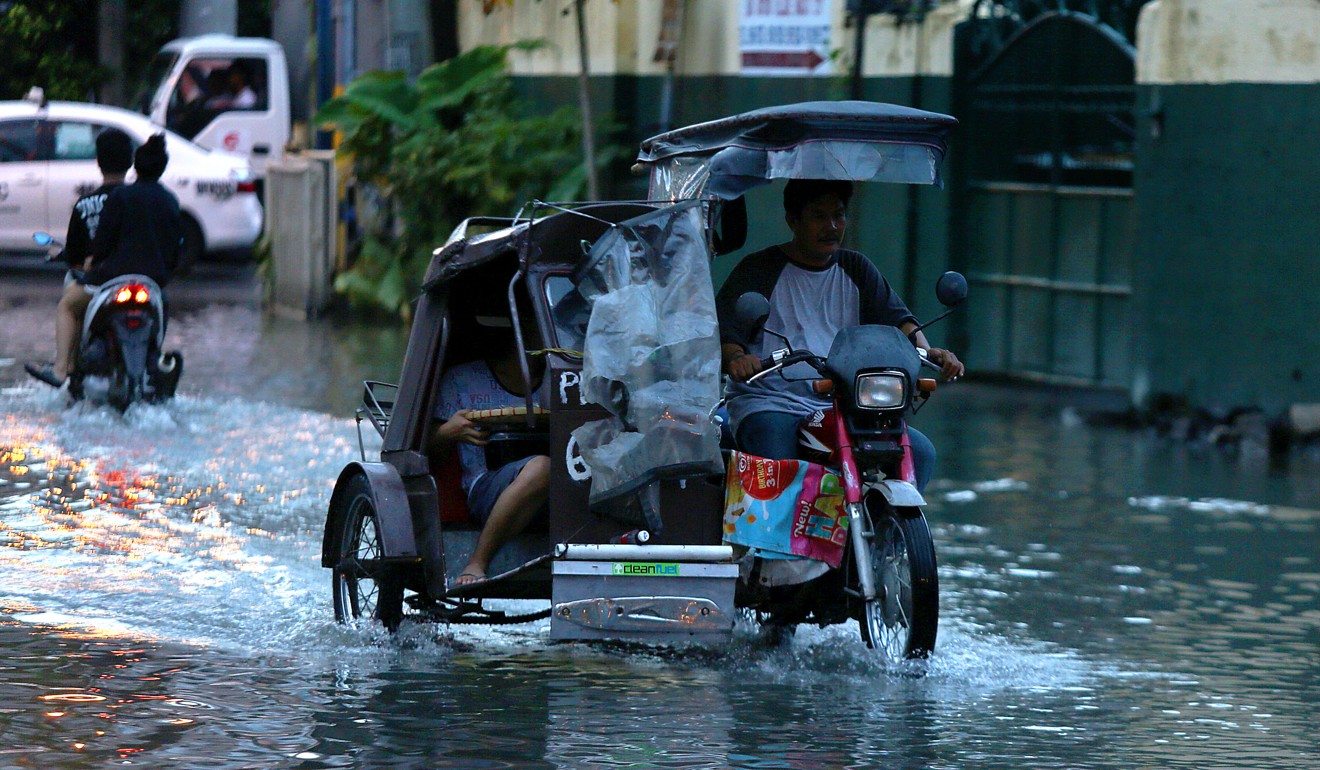
Philippine resort Puerto Princesa chooses ‘morally correct’ low-carbon path
How a popular site can enjoy a green epiphany using solar panels, LED lights, rainwater harvesting, refillable bottles and bamboo roofs for extra cooling
When Theresa Walgraeve and her husband set up their 15-room resort in Puerto Princesa, a city on the Philippine island of Palawan, they worried about mosquitoes and monsoons, and the high cost of electricity.
That is when the island’s Zero Carbon Resorts programme approached them with suggestions on how to save energy and costs – from solar panels and LED lights to rainwater harvesting, refillable bottles and bamboo roofs for extra cooling.
The Walgraeves enrolled in the programme, made the changes, and achieved significant savings.
“They were not very big adjustments, but we were able to cut our electricity and water use by a fair amount,” Walgraeve said.
“Many guests are also mindful and appreciate the fact that we are zero carbon. And we are happy that we make a difference to not just Puerto Princesa and Palawan, but also the earth.”
We are an island eco-system, so we are particularly vulnerable to climate change impact
In 2011, Puerto Princesa became the first Southeast Asian city to earn a “zero carbon” label, meaning it produces no more climate-changing emissions than it can offset, according to an audit by environmental partnership “SEED” and the Manila Observatory.
In fact, by preserving its forests, using “green building” design and shunning the diesel that once powered generators in homes and hotels, the city is “carbon negative”, meaning it pulls more carbon dioxide from the atmosphere than it emits, according to the audit.
That makes it an outlier in the Philippines.
But it, like other Philippines cities, has motivation to act: the nation is one of those most severely hit by wild weather triggered by climate change, with its coastal cities particularly vulnerable to rising sea levels and deadly storms.

A report by the world’s leading climate scientists, released on Monday, gives a stark warning that such threats will continue to grow unless the world can hold rises in global temperatures to 1.5 degrees Celsius, just a half degree higher than today.
Around the world, cities are at the frontline of the battle to curb emissions, as urbanisation surges. More than two-thirds of the world’s population is forecast to live in cities by 2050, according to the United Nations.
Cities also consume more than two-thirds of the world’s energy and account for about three-quarters of carbon dioxide emissions, according to the UN.
“High-growth Southeast Asian cities are very vulnerable, yet lag behind in incorporating more renewable energy generation in their plans,” said Rob Roggema, a professor and urban sustainability expert at the University of Technology Sydney.
“Often, it is the lack of political will that is the reason. But it can be done, no matter how big or small the city, with the participation of residents and the private sector,” he said.
Most cities around the world are already dealing with the effects of climate change, from hotter and more humid summers to deadlier storms and frequent flooding. A growing number are taking action.
Leaders of some of the biggest cities recently vowed to make all buildings carbon neutral by 2050. More than 70 cities have pledged to become zero carbon by mid-century.
Admittedly, Puerto Princesa is a smaller city, with a population of 223,000 people, according to a 2010 census.
But Palawan island, with its white-sand beaches and clear blue waters, is seen as a green leader in the country.

Twenty-five years ago, the island was being “ravaged” by illegal logging and fishing, and rampant mining, said Edward Hagedorn, who was elected mayor of Puerto Princesa in 1992.
Hailing from a family of loggers, Hagedorn vowed in his victory speech to make the city “clean and green”, and protect its natural resources.
In two decades as mayor he clamped down on commercial logging and mining, and introduced electric tricycles.
He also pushed the tourism industry towards more sustainable practices to draw more responsible visitors to its attractions, which include a subterranean river named in 2012 as one of the “new wonders of the world”.
That shift has helped replace jobs lost in mining and logging, he said.
“I had seen first-hand the destruction caused by rampant logging, fishing and mining,” Hagedorn said. “When I won the election, I had an epiphany: I wanted to show that economic development is possible without destroying the environment. A low carbon pathway is the morally correct one.”

At his urging, Palawan passed a strategic environmental plan in 1992. It declares the state must protect, develop and conserve its natural resources and enhance the environment while pursuing “socio-economic goals”.
The Palawan Council for Sustainable Development was set up to oversee this goal. One of its key actions was launching the Zero Carbon Resorts programme in 2011 with funding from the European Union.
While member resorts did not receive financial help, they could request an audit, and were advised on how to make improvements to increase energy efficiency, said Adelinea Benavente-Villena, who leads the project.
Lessons from the experience have been incorporated into a Zero Carbon and Green Building Policy for Palawan, passed last month.
“We are an island eco-system, so we are particularly vulnerable to climate change impact,” Benavente-Villena said.
“The measures we introduced in the tourism sector – renewable energy sources, use of local materials and green technologies – are being extended to other sectors, as well.”

The push for zero carbon has had mixed results worldwide. While some cities have made significant progress in reducing emissions, there have also been some notable failures.
Masdar City in Abu Dhabi, touted as the world’s first emissions-free city, remains late and sparsely populated.
South Korea’s Songdo, billed as the world’s greenest city, has also faced challenges meeting its low-carbon aims.
Cities in the Philippines have struggled too. The capital Manila and popular tourist destinations including Cebu are battling choked streets and rising pollution.
President Rodrigo Duterte earlier this year called Boracay island, a popular resort, a “cesspool” and ordered its closure for six months, warning of a looming environmental disaster.

In contrast, Puerto Princesa’s popularity as a favoured destination for eco-friendly tourism has steadily grown, with more than 850,000 visitors last year compared to 12,000 in 1992, said Frances Victorio, who worked on the greenhouse gas audit in 2009.
Today, it has the largest forest area in the Philippines at 65 per cent, and boasts one of the healthiest coral reefs, said Victorio, a former chief of the Philippine Climate Change Commission.
The city “will most probably remain carbon-neutral until at least 2030”, according to the audit, when population growth and vehicle emissions threaten to outpace efforts to cut emissions.
Still, “it’s a good example of what can be achieved if people put their heads together and work for a common goal”, Victorio said.
“We had good leadership, and everyone was ready to pitch in for the greater good of clean air and clean water for us, our children and our grandchildren.”
